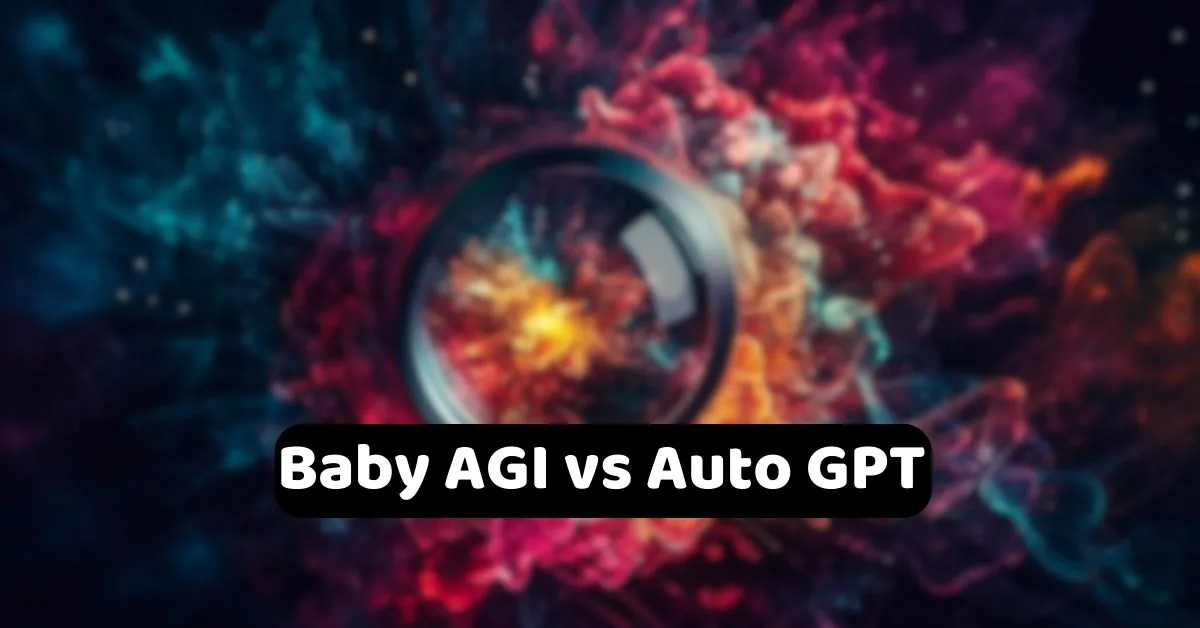Artificial general intelligence (AGI) is the holy grail of AI research, promising human-like adaptability and problem-solving capabilities.
While true AGI remains on the horizon, innovators are making rapid progress with AI systems like Baby AGI vs Auto GPT that showcase increasing autonomy.
This in-depth guide will compare Baby AGI vs Auto GPT across key factors like features, performance, use cases, and safety considerations. Whether you are looking to leverage autonomous AI for content creation, task automation, or something more advanced, understanding these two systems is crucial. Read on for a comprehensive Baby AGI vs Auto GPT showdown!
What is Baby AGI & How Does It Work?
Baby AGI represents an early stage of artificial general intelligence, able to autonomously execute tasks and make limited decisions. It combines programs like ChatGPT-4, LangChain, and Pinecone via an approach called “stacking.”
In essence, Baby AGI software built on top of GPT-4 interacts with the internet and transforms text instructions into actionable steps. It creates, prioritizes, and executes tasks in an infinite loop based on predefined goals.
The workflow includes:
- Pulling tasks from a queue
- Executing them via APIs and internet access
- Creating new tasks based on outcomes
- Repeating the loop
While basic, Baby AGI showcases the ability to make goal-based decisions independently in sectors like robotics, automation, and finance.
What is Auto GPT & How Does It Work?
Auto GPT utilizes the generative capabilities of GPT-4 and GPT-3.5 to autonomously create content like text, code, and images. The user provides a name, role, and explains the desired task.
Auto GPT then breaks the goal down into sub-tasks, generates relevant content, and leverages tools like DALL-E to create images. By chaining GPT outputs, it can achieve set objectives with no further prompting needed.
Simultaneously running multiple iterative loops, Auto GPT stores artificial memories to build upon. It excels at text and multimedia content generation compared to Baby AGI’s focus on task automation.
Comparing Key Features of Baby AGI vs Auto GPT
While both leverage GPT architecture, Baby AGI vs Auto GPT have distinct features and strengths:
- Baby AGI utilizes GPT-4, LangChain, Pinecone, and Chrome for internet-based task execution. Auto GPT relies solely on GPT-4 and GPT-3.5 for content generation.
- Baby AGI creates tasks sequentially, retaining long-term memory to work efficiently. Auto GPT runs simultaneous loops, storing info artificially.
- Baby AGI is goal-oriented, making decisions to complete tasks. Auto GPT is optimized for text and rich content creation.
- Baby AGI showcases more advanced capabilities like robotics control. Auto GPT exceeds at generating written content, code, images, etc.
- Baby AGI has limited internet access. Auto GPT leverages web scraping and APIs to deliver content.
- Baby AGI focuses on efficiency. Auto GPT sometimes gets lost in details and repetitions.
Baby AGI vs Auto GPT: Performance Comparison
When it comes to real-world performance, Baby AGI vs Auto GPT each have advantages in different domains:
- For content creation, Auto GPT generates more creative and higher quality output compared to Baby AGI.
- Baby AGI exceeds at completing tasks like trading cryptocurrencies where efficiency matters.
- For advanced use cases like robotics, autonomous systems, or simulations, Baby AGI showcases more general intelligence.
- Auto GPT has generated full websites, research papers, and other long-form content autonomously.
- Baby AGI is better for executing tasks one-by-one rather than managing multiple complex goals.
- Auto GPT’s content quality and scope tends to diminish when not closely monitored and reigned in.
Overall, Auto GPT delivers impressively on content creation while Baby AGI reveals more potential for real-world autonomous decision making.
Are Baby AGI and Auto GPT Safe to Use?
As with any AI system, certain safety risks exist:
- Baby AGI is limited by its training data quality and lacks web access, reducing possible harm.
- Auto GPT risks downloading malicious files, data leaks, and generating dangerous content if not constrained properly.
- Close human monitoring is advised to catch errors and prevent undesirable actions.
- Using Auto GPT on an isolated virtual machine can limit security vulnerabilities.
- Guidelines on appropriate use cases and limitations are wise to implement for either system.
The future potential makes continued refinement of Baby AGI vs Auto GPT promising yet requiring of ethical oversight.
Read Also: Venus Chub AI Review: Features, Pricing & Alternatives
Conclusion
Baby AGI and Auto GPT provide a fascinating look at early-stage artificial general intelligence capabilities.
While Auto GPT excels at creative content production, Baby AGI shows more potential for real-world autonomous decision making.
Understanding their respective strengths, weaknesses and use cases provides guidance on leveraging these AI tools effectively today. With prudent oversight and further advancement, the foundations displayed by Baby AGI and Auto GPT bring us steps closer to realizing artificial general intelligence.

